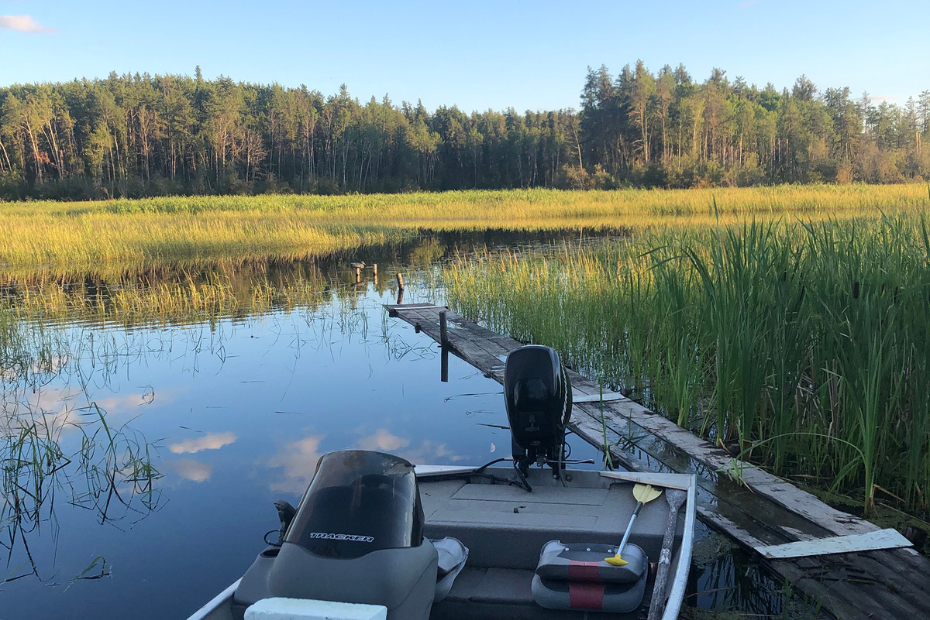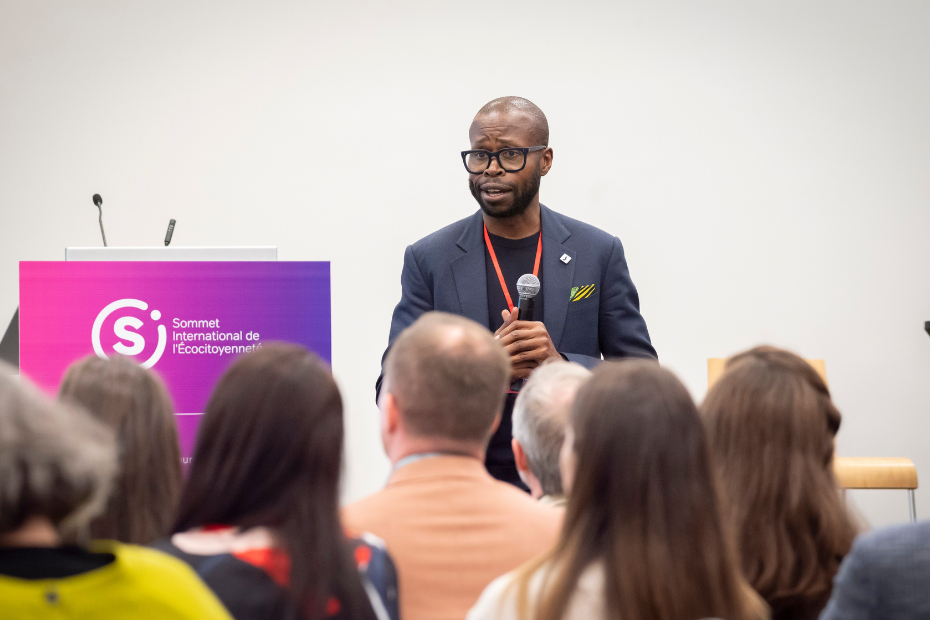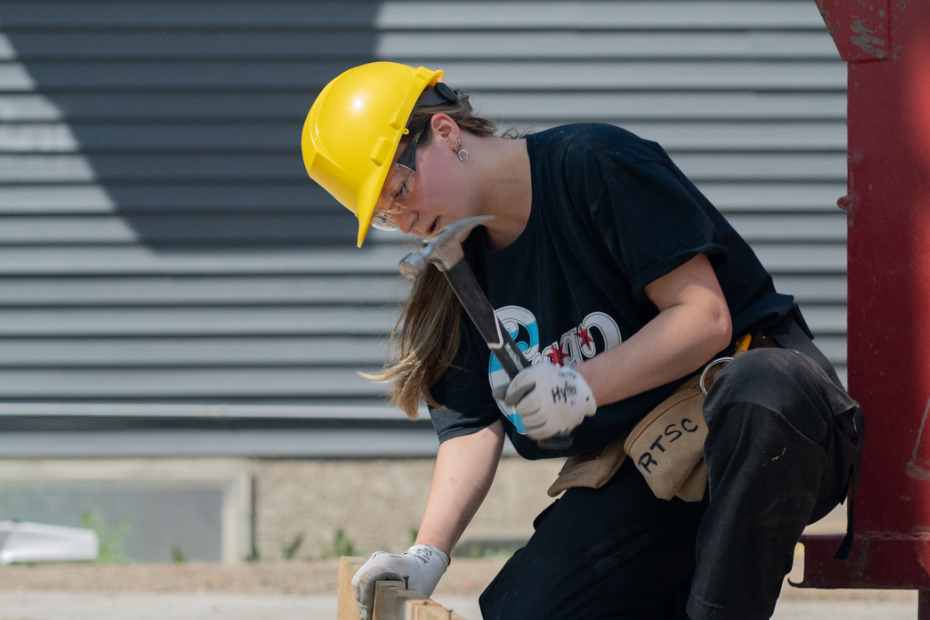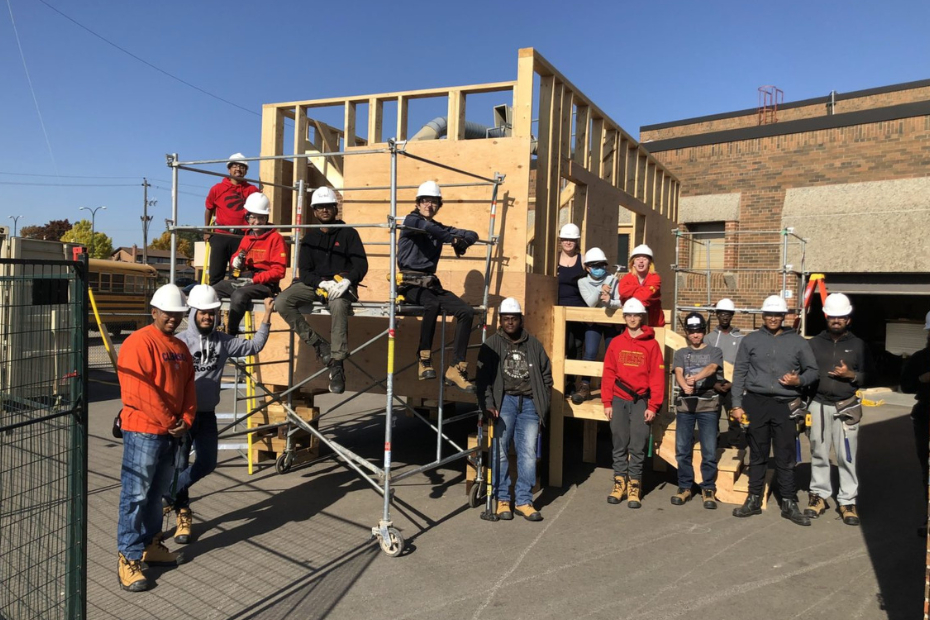Within Canada’s skilled trade workforce — the welders, machinists, electricians and plumbers who have long been the backbone of Canada’s economy — more workers are retiring than are entering the field. By 2028, projections suggest that approximately 700,000 workers will retire. New recruitment has been affected by volatility and recession, as well as the pandemic reducing apprenticeship opportunities. Industry experts estimate a shortage of 10,000 workers in nationally-recognized Red Seal trades over the next few years. What’s more, gaps in digital skills needed for many roles may add more instability.
To help close this gap, increase diversity, and provide essential training and skills for youth, Saskatchewan Polytechnic announced their new Skills Enhancement Training Project and RBC’s investment in the future of skilled trades. The project not only helps underserved youth build skills in many different trade, but may also help change the trajectory of their lives.
“Today’s announcement about the Skills Enhancement Training Project and RBC’s gift of $450,000 over three years is not actually about dollars,” says Kim Ulmer, RBC Regional President for Manitoba, Saskatchewan, Nunavut and Western Ontario. “It is about leaning into equity and belonging for diverse communities including Indigenous, New Canadians, visible minorities, 2SLGBTQ+, women and people with varying abilities.”
To discuss the challenges, Saskatchewan Polytechnic recently hosted a virtual conversation with the following industry experts:
- Cynthia Leach (Moderator) — Senior Director, Economic Thought Leadership at RBC;
- Lyle Daniels — Indigenous Community Director for the Building Trades of Alberta;
- Brittany Grimsdale — Program Head for Women in Trades and Technology at Saskatchewan Polytechnic;
- Collin Pullar — President, Saskatchewan Construction Safety Association.
Untapped talent and potential
Cynthia Leach, speaking to the RBC Thought Leadership report Powering Up: Preparing Canada’s skilled trades for a post-pandemic economy, began the conversation by saying representation is one factor hindering growth within Canada’s skilled trades workforce. “We’re not tapping into all the pools of talent we could,” she says. “Women and immigrants are not represented in the skilled trades in proportion to their representation into society.” And while Indigenous Canadians have a higher representation in skilled trades, Indigenous populations, women, and immigrants all face barriers to careers in skilled trades.
Attracting women to skilled trades careers
Brittany Grimsdale entered the skilled trades in 2009 at a time when she was one of only a few women training and working in her field. She’s spent her career helping other women do the same.
Her suggestions for attracting women to the trades workforce are:
- Promote trades as a first-choice career. “We need to promote trades as one of those careers that is a fulfilling profession which allows for growth, financial stability and job security throughout the years,” she says.
- Provide hands-on learning in an inclusive, safe and comfortable environment. The Saskatchewan Polytechnic Women in Trades Exploratory course offers women a variety of potential skilled trades. “Going through a course like this gives potential tradeswomen an idea of which trade they may be a good fit for,” she says. “And it gives them a lot more confidence in their skills.”
- Showcase role models who come from similar backgrounds. Role models and mentors allow those from underrepresented groups to see themselves in those fields.
- Expose young people to trade opportunities early. “Early exposure to career opportunities gives young people a broader perspective and more choices when they go to choose a career later in life,” advises Grimsdale. Her team runs a trades camp for girls that introduces a multitude of trades activities.
- Give members of rural communities the same opportunities to attend programming. Saskatchewan Polytechnic has invested in a trades workshop trailer that allows instructors to bring workshop exploration opportunities to rural communities. This way youth can learn skills locally, without barriers to transportation.
- Expand childcare options. Introducing funding opportunities or locations for childcare to help women get an education.
Building an inclusive environment for Indigenous youth
For more than eight years, Lyle Daniels has worked with Saskatchewan Building Trades Council to develop opportunities with Indigenous communities. He’s made it his mission to work with young Canadians to create pathways to long and valuable careers in the skilled trades.
His thoughts on the barriers and opportunities for Indigenous youth include:
- Understand the legacy of residential schools. “If you’re going to be working with a First Nations young person, chances are they may have gone to a residential school, their parents may have gone to residential school, or their grandparents may have gone to residential school,” he explains. “It brings back a large number of barriers about how they may see themselves being successful in a career.”
- Expose youth to as many trades as possible. Daniels explains that youth on-reserve may only see carpenters, plumbers and electricians. “They don’t get the opportunity to try out being a welder or an ironworker, for example, because they don’t see that on reserve,” he says. Barriers related to getting a driver’s license or a vehicle to travel are simple things that also need to be addressed.
- Give teachers the tools to help guide youth. If a student wants to be an electrician, Daniels believes a teacher should have the knowledge to tell them they need high marks for that career. If a young person is struggling with academics, meanwhile, teachers may guide them to trades without that requirement. “Giving teachers the tools to help young people develop a path forward is the key to starting in any career.”
- Leverage digital learning opportunities. “It’s a big move to leave your home in a rural area on a reserve in order to take training,” explains Daniels. Digital training and outreach are therefore critical to help attract and prepare Indigenous youth.
- Create an inclusive environment. “We need to ensure that they are being looked after at the worksite because there is still racism out there,” adds Daniels.“We need to prepare industry and teach the people working alongside Indigenous people to become their brothers and sisters.” Daniels also suggests recognizing cultural traditions and ceremonies contributes to the strength, pride and resilience of Indigenous youth.
Changing how people picture skilled trades
Collin Pullar, President of the Saskatchewan Construction Safety Association, is heavily involved in safety education and training in Saskatchewan. His suggestions on how to attract untapped talent include:
- Revise the picture of what a tradesperson looks like. Pullar recognizes that many have grown up visualizing someone working in the trades as a big and burly individual — someone who can carry large pieces of equipment. “In reality the range of roles is dramatic,” says Pullar.
- Promote safety advancements. “There are inherent risks to the trades,” he says. “However, we have developed techniques on how to work safely within construction environments.”
- Showcase design. Pullar says new technology, techniques and materials can help attract new people interested in style and design. “The attention to detail and style is something that is being really valued.”
The potential lack of skilled tradespeople may begin to limit Canada’s economic growth in years to come. While the challenges are real, the ideas, programs and technologies presented may break down barriers, providing more career opportunities and helping close the labour gap.
This article is intended as general information only and is not to be relied upon as constituting legal, financial or other professional advice. A professional advisor should be consulted regarding your specific situation. Information presented is believed to be factual and up-to-date but we do not guarantee its accuracy and it should not be regarded as a complete analysis of the subjects discussed. All expressions of opinion reflect the judgment of the authors as of the date of publication and are subject to change. No endorsement of any third parties or their advice, opinions, information, products or services is expressly given or implied by Royal Bank of Canada or any of its affiliates.



















